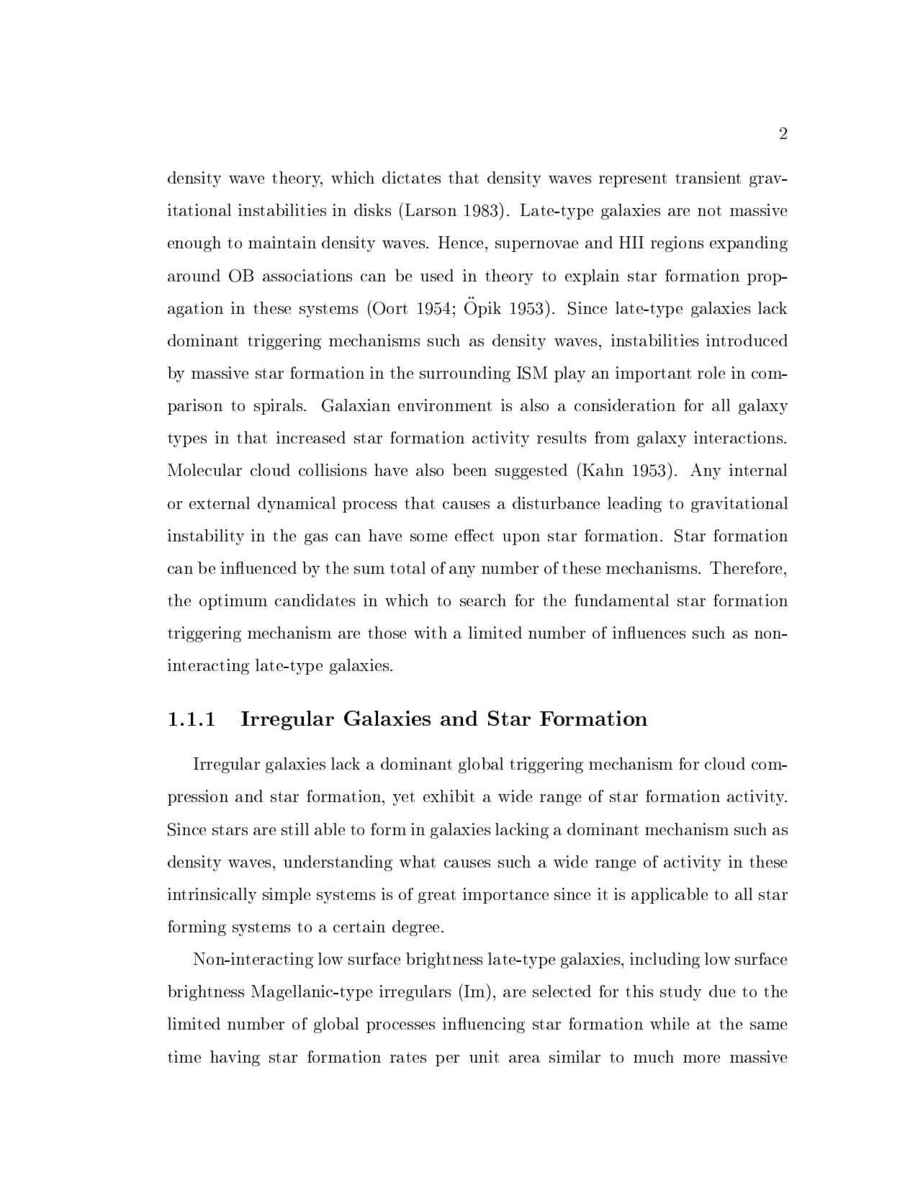Astronomical Applications Department, U.S. Naval Observatory thesis Page 16

2
density wave theory, which dictates that density waves represent transient grav-
itational instabilities in disks Larson 1983. Late-type galaxies are not massive
enough to maintain density waves. Hence, supernovae and HII regions expanding
around OB associations can be used in theory to explain star formation prop-
agation in these systems Oort 1954; Opik 1953. Since late-type galaxies lack
dominant triggering mechanisms such as density waves, instabilities introduced
by massive star formation in the surrounding ISM play an important role in com-
parison to spirals. Galaxian environment is also a consideration for all galaxy
types in that increased star formation activity results from galaxy interactions.
Molecular cloud collisions have also been suggested Kahn 1953. Any internal
or external dynamical process that causes a disturbance leading to gravitational
instability in the gas can have some e ect upon star formation. Star formation
can be in uenced by the sum total of any number of these mechanisms. Therefore,
the optimum candidates in which to search for the fundamental star formation
triggering mechanism are those with a limited number of in uences such as non-
interacting late-type galaxies.
1.1.1 Irregular Galaxies and Star Formation
Irregular galaxies lack a dominant global triggering mechanism for cloud com-
pression and star formation, yet exhibit a wide range of star formation activity.
Since stars are still able to form in galaxies lacking a dominant mechanism such as
density waves, understanding what causes such a wide range of activity in these
intrinsically simple systems is of great importance since it is applicable to all star
forming systems to a certain degree.
Non-interacting low surface brightness late-type galaxies, including low surface
brightness Magellanic-type irregulars Im, are selected for this study due to the
limited number of global processes in uencing star formation while at the same
time having star formation rates per unit area similar to much more massive
